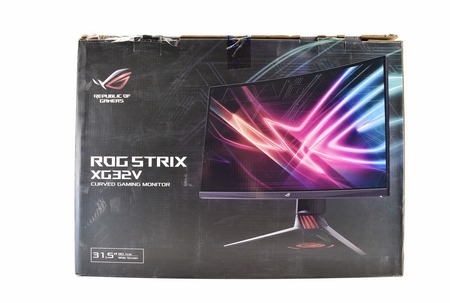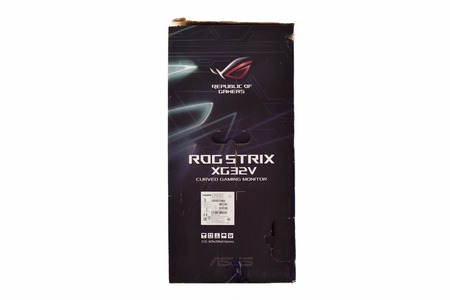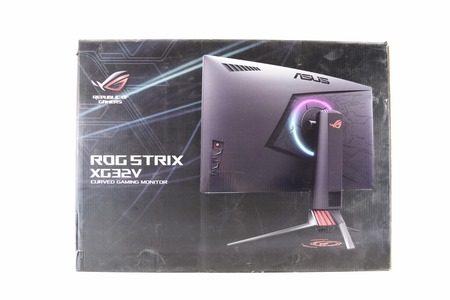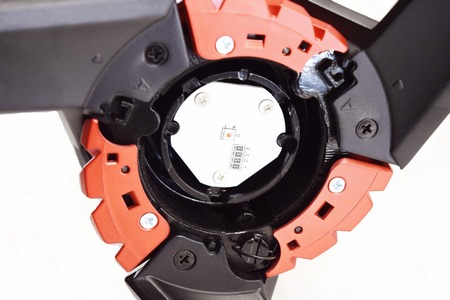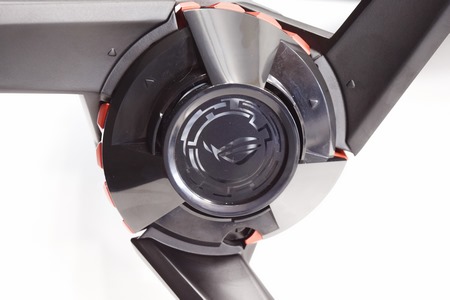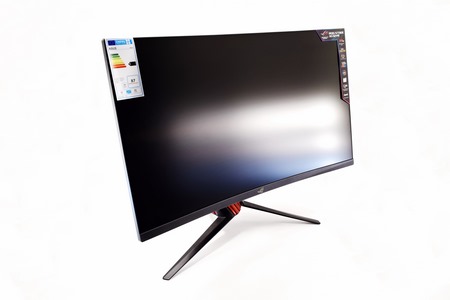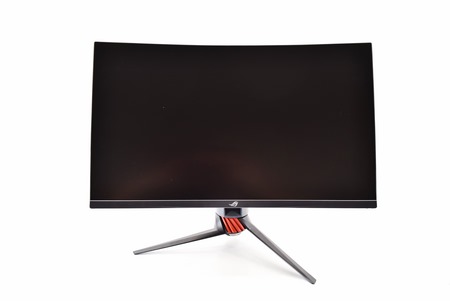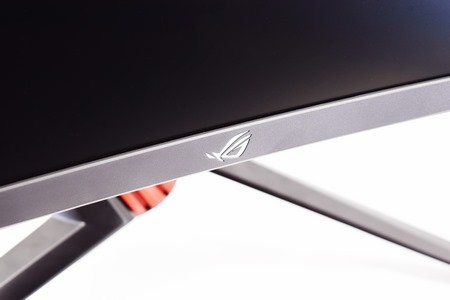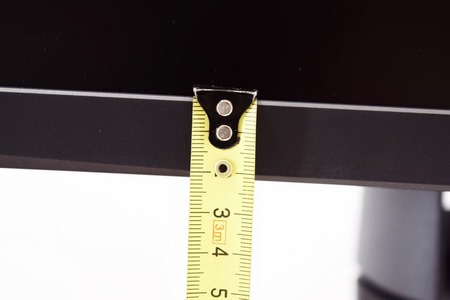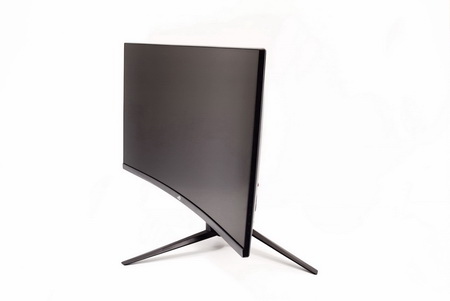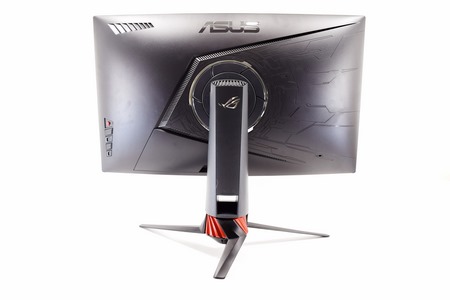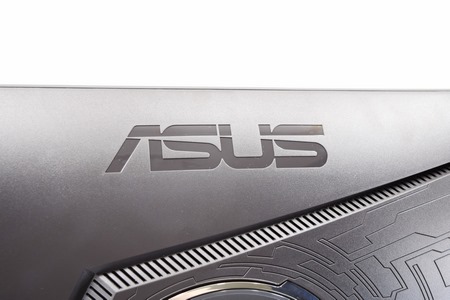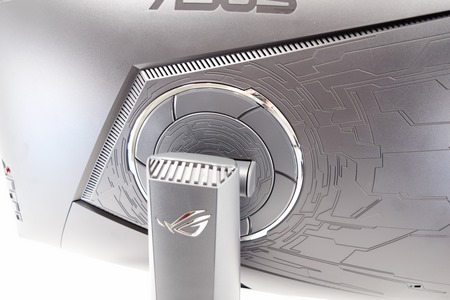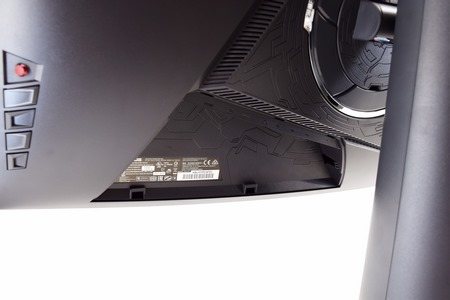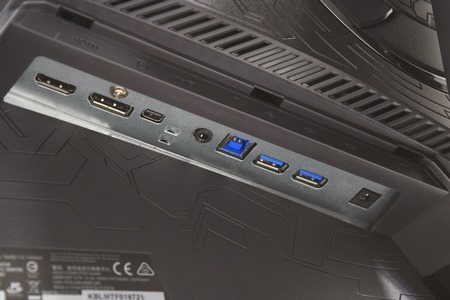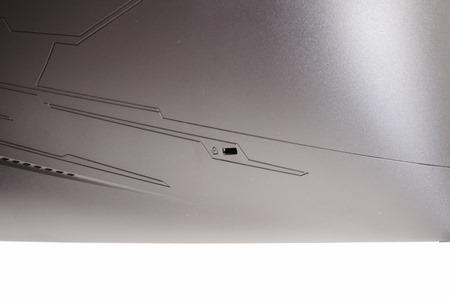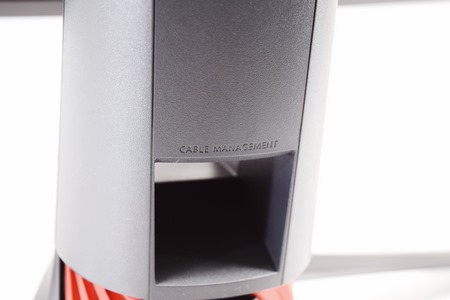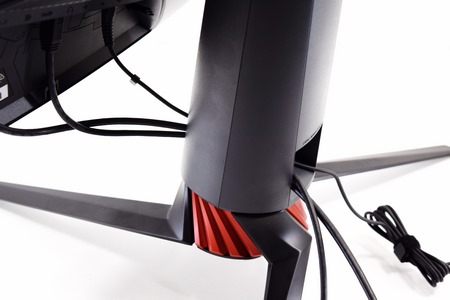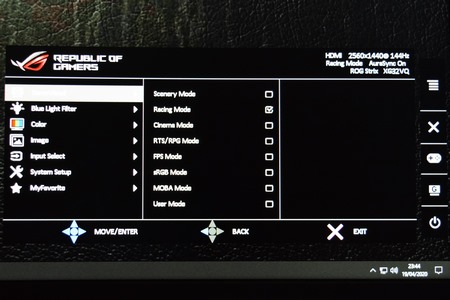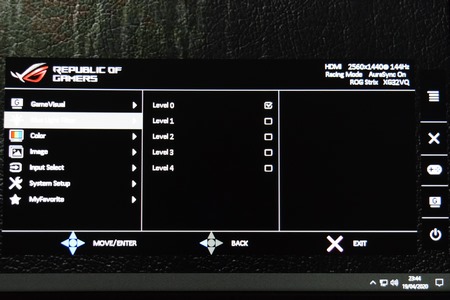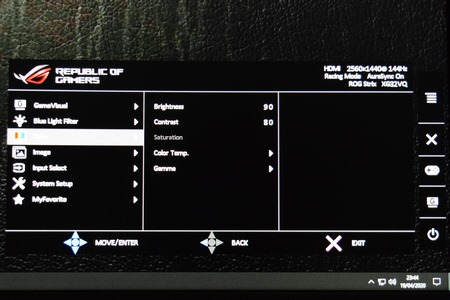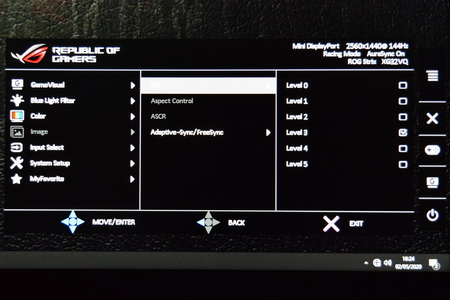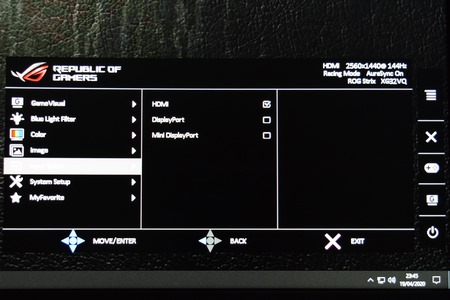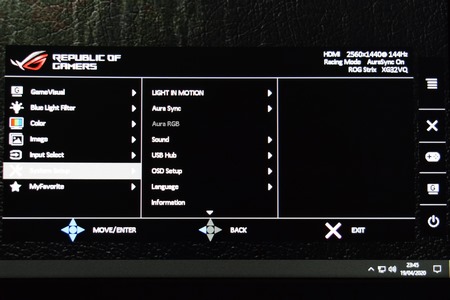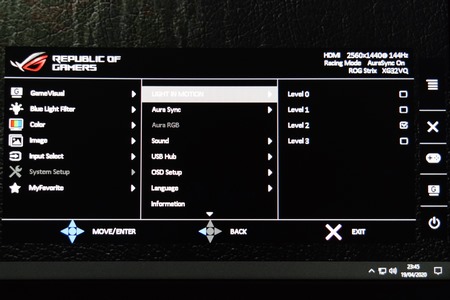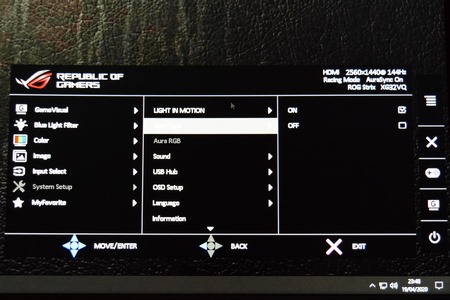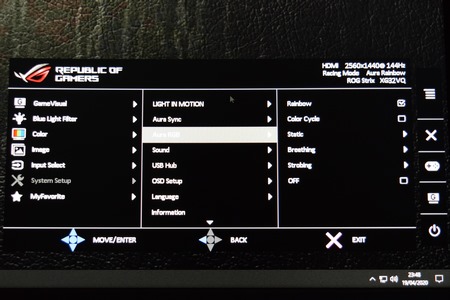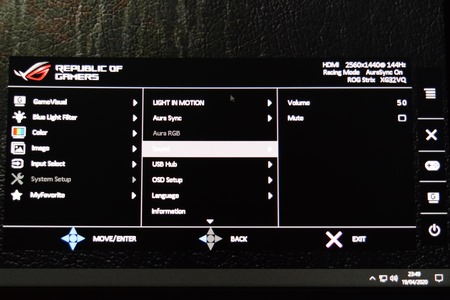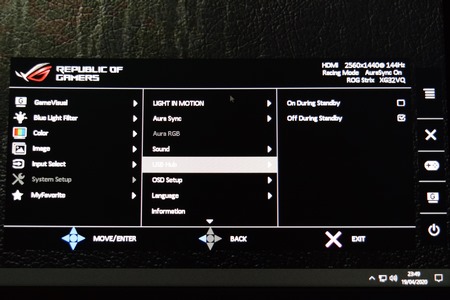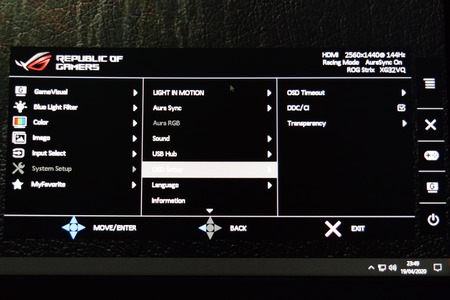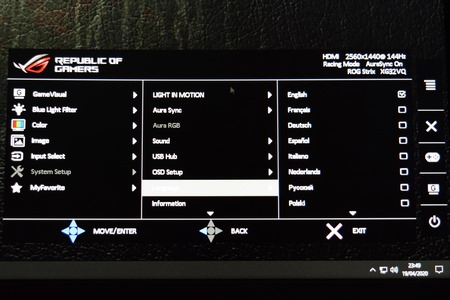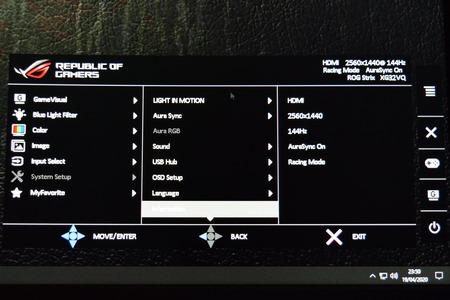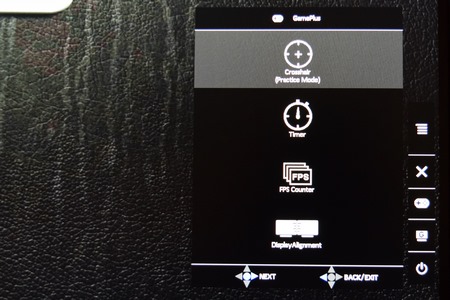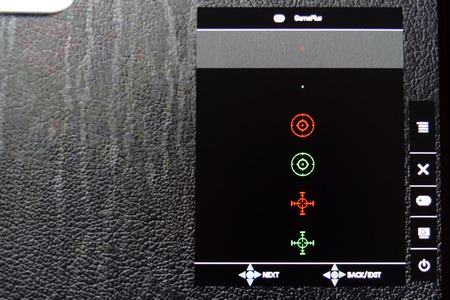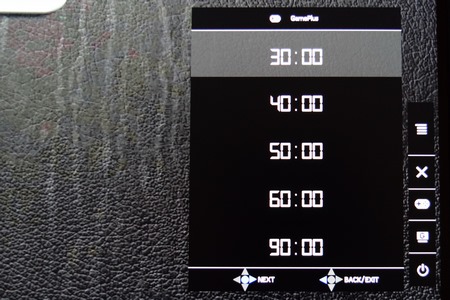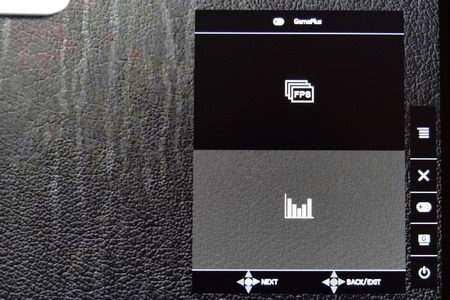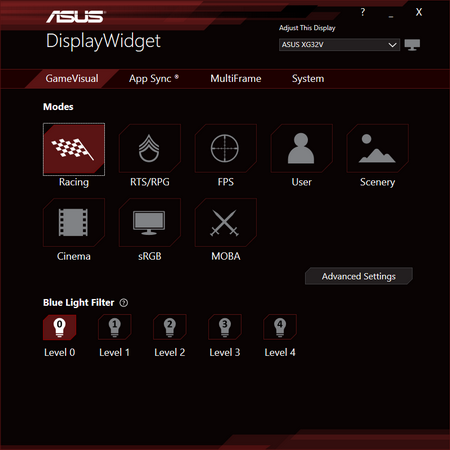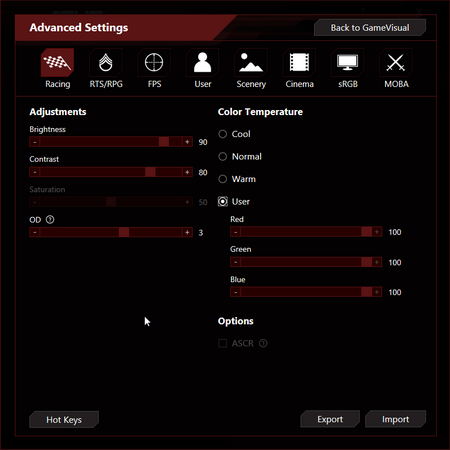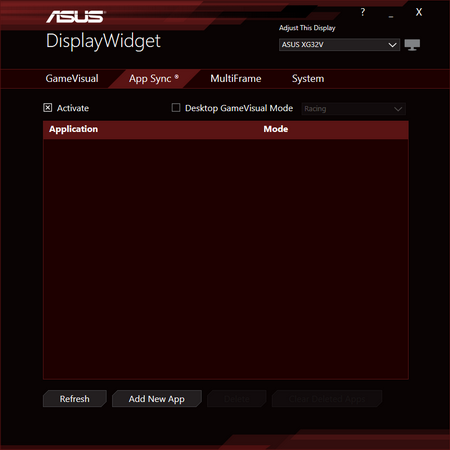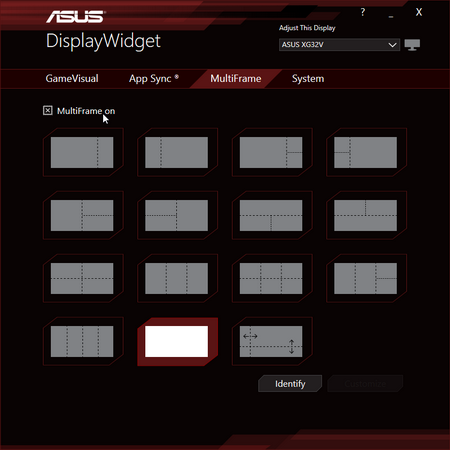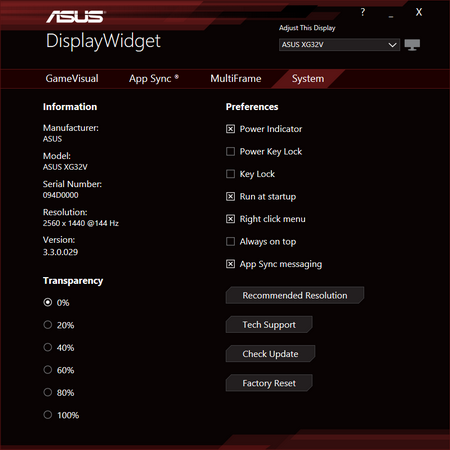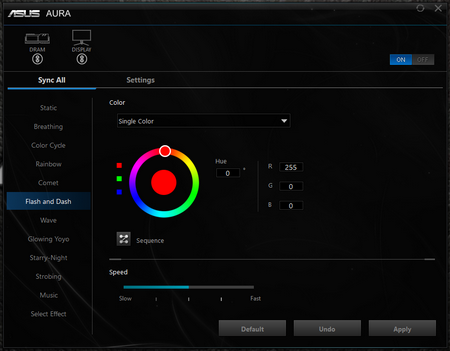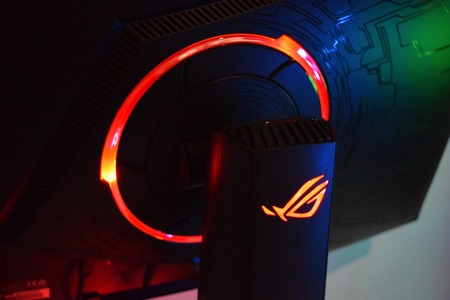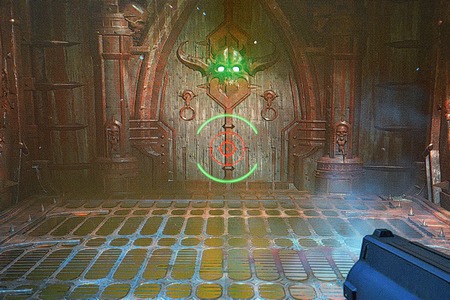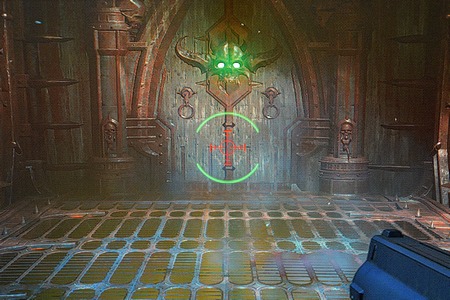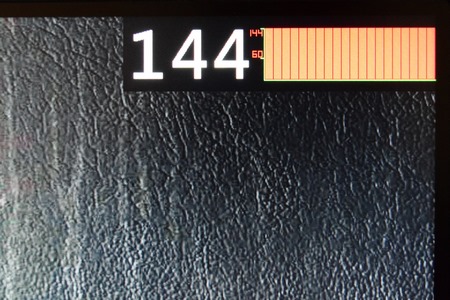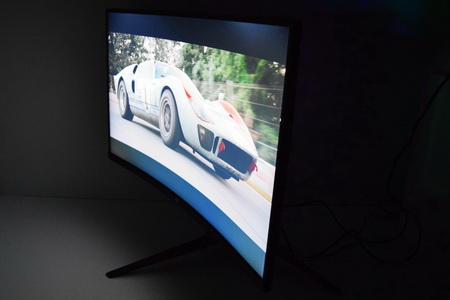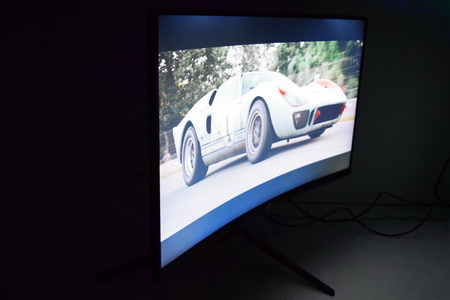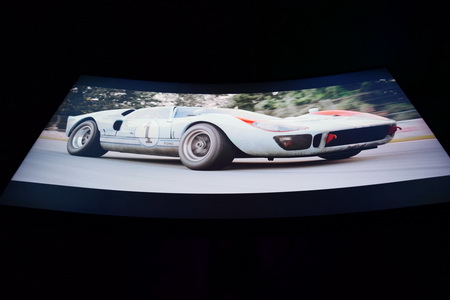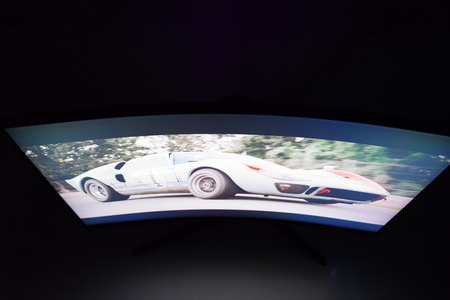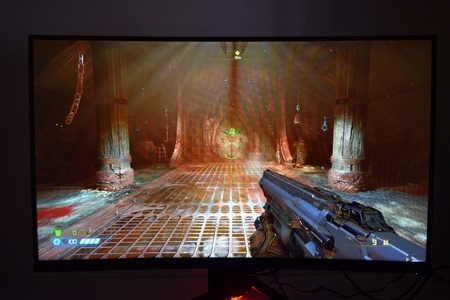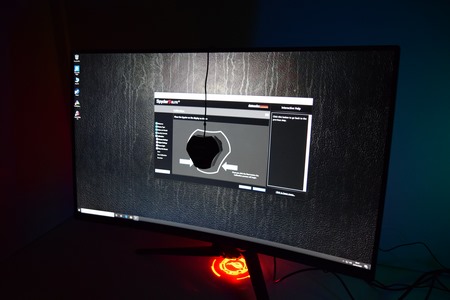INTRODUCTION
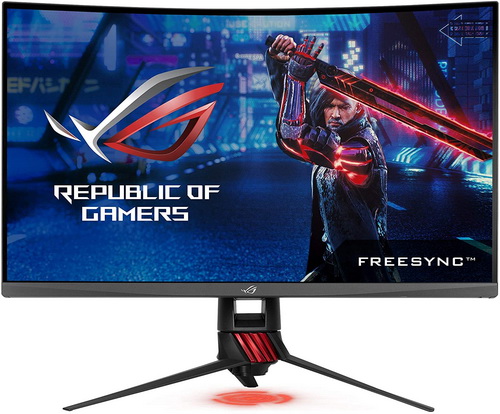
From time to time i like to compare (remember) what we had many years ago with what we have today and one of the things that really stand out is monitor screens. I mean just think about it, back in the 90's we all had CRT screens which weren't just extremely bulky and heavy but they had limited sizes (21" was the largest consumer oriented model) and resolutions (most models didn't exceed 1280×1024) and on top of those they were also really bad for our eyes. Of course, the first TFT screens weren't that far behind since they made their debut in the late 90's but it wasn't until 2004-2005 that we were finally able to get large screen models with relatively good specifications. Today it's a whole different market and even though most consumers seem to place monitors last in terms of significance when building a new system there are some which have managed to reach extreme levels of popularity. The ROG Strix XG**V line of curved gaming monitors by ASUS is among those and today I’ll be testing one of the best-selling models of that line, the XG32V(Q).
For years since its establishment, ASUS aimed to put an ever-greater emphasis on PC gaming. This process resulted in the 2006 founding of the Republic of Gamers brand (ROG), formed for the sole purpose of delivering the most innovative hardcore hardware for truly dedicated gamers. Since then, the efforts of the ROG team have led to a constant flow of PC gaming technology that has become legendary among enthusiasts for its performance. ROG is more than just hardware, though – we take an active part in the global gaming community, helping develop the industry by sponsoring events such as PAX and Dreamhack. Worldwide media have recognized ROG as a leader in PC gaming and overclocking performance, with many of our products winning awards and gaining very positive feedback from hardware pros. With this great response from gamers and the industry, ROG has all the resources it needs to keep working on enabling even better experiences – technology never sleeps, nor should the action!
The XG32VQ is a 32-inch (31.5-inch to be precise) 16:9 wide curved monitor based on a SVA panel (8-bit depth/93ppi pixel density/WLED backlight) featuring 178 degrees viewing angles (horizontal/vertical), WQHD resolution of 2560x1440, 144Hz refresh rate (Adaptive-Sync/FreeSync), 4ms response time (grey to grey), 125% sRGB color gamut, 3000:1 contrast ratio and brightness level of up to 300cd/m2. The XG32VQ also sports a 1800R curvature with anti-glare coating for optimal viewing results, adjustable stand (height/swivel/tilt), Aura Sync compatibility, GamePlus technology (4 different crosshairs/timer/fps counter/display alignment), ultra-low blue light filters (5 stages) and flicker-free technology. As for available connectors (I/O) the ASUS ROG Strix XG32VQ comes ready with two USB 3.0 ports, DisplayPort v1.2, Mini DisplayPort, HDMI v2.0 and an earphone jack.
SPECIFICATIONS AND FEATURES

PACKAGING AND CONTENTS
The screen arrived inside a large black box that has the company logo at the front right next to a large product picture showcasing the front of the screen.
A small sticker with the serial and part numbers and barcodes is located on the left side.
At the rear we find yet another large product picture this time however showcasing the rear of the screen.
Even though the box seemed to have been opened that wasn't the case (ASUS uses a thin tape/film to ensure the foam spacers have not been tampered with).
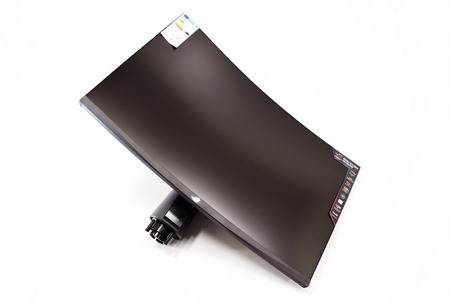
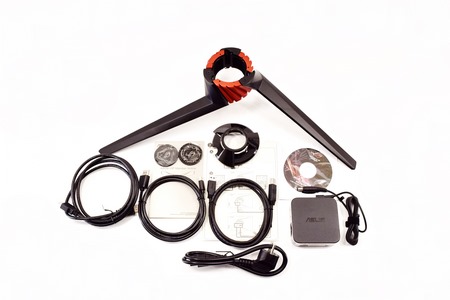 Along with the screen and its base you will also receive three logo covers, DisplayPort to Mini DisplayPort cable, HDMI cable, USB host cable, power adapter with cord, software CD, VIP member paper and the user manual.
Along with the screen and its base you will also receive three logo covers, DisplayPort to Mini DisplayPort cable, HDMI cable, USB host cable, power adapter with cord, software CD, VIP member paper and the user manual.
THE ROG STRIX XG32VQ
First thing to do is to attach the base to the stand of the screen as seen above (you can also see the LEDs located at the end of the stand).
After that you can place the bottom of the base with one of the three available covers.
The black and red color combination chosen by ASUS looks great (a bit redder wouldn't hurt).
Measuring 713.38mm in width the wide screen of the ROG Strix XG32VQ could be more ideal for many consumers compared to ultra-wide models.
The ASUS ROG Strix logo is placed at the center of the bottom bezel.
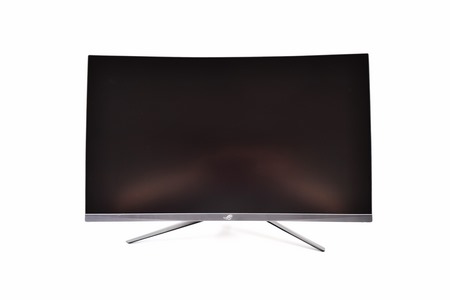
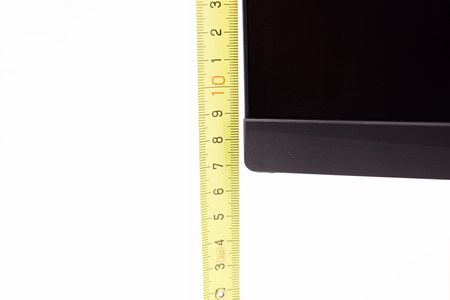
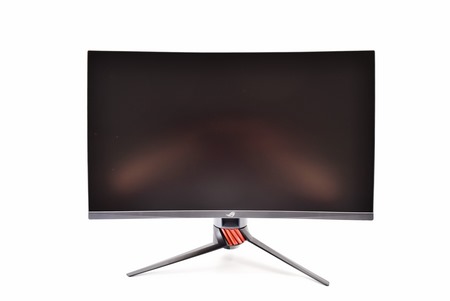

ASUS has used a height adjustable stand which can set the screen as low as 68mm and all the way up to 178mm from your desk.
It's also worth pointing out that the bezel is roughly just 1mm on all sides but the bottom which is roughly 21mm thick.
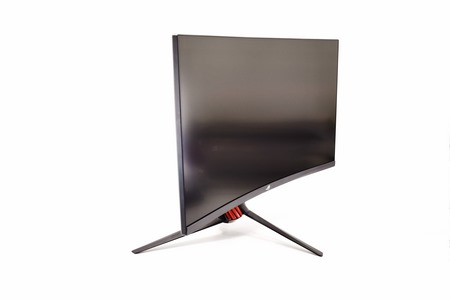
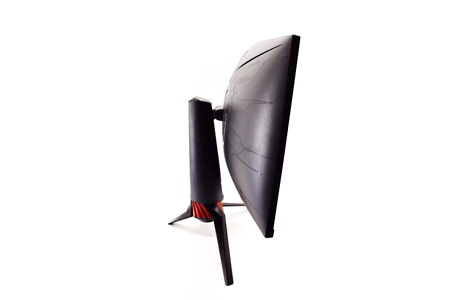
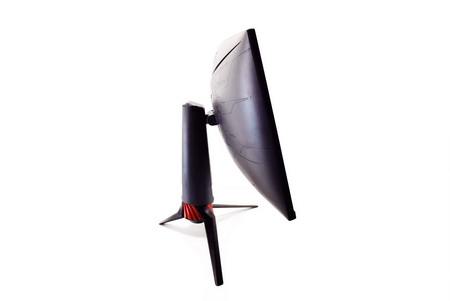 The stand can also swivel up to 50 degrees on each side (100 degrees total) and tilt up to +20 degrees up and -5 degrees down.
The stand can also swivel up to 50 degrees on each side (100 degrees total) and tilt up to +20 degrees up and -5 degrees down.
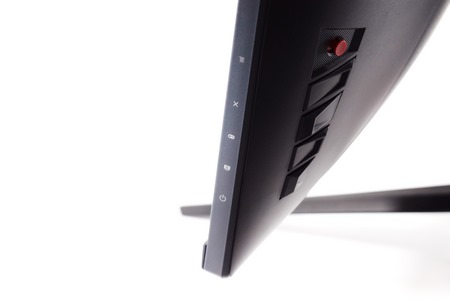
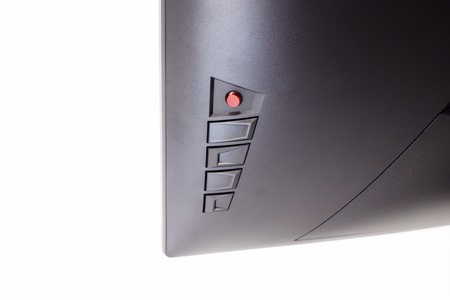 All of the menu buttons (including a red joystick) are located on the rear right side of the XG32VQ and are tagged on the side.
All of the menu buttons (including a red joystick) are located on the rear right side of the XG32VQ and are tagged on the side.
Moving at the rear of the screen we find the company logo, RGB LED ring, RGB company logo and the hidden I/O ports (there's a plastic cover there which needs to be removed to access the ports).
The I/O includes the DC in, 2 USB-A 3.0 ports (3.1 Gen1), USB 3.0 host port, 3.5mm headphone jack, Mini DisplayPort, DisplayPort v1.2 port and an HDMI v2.0 port.
A Kensington lock is also present at the rear of the XG32VQ along with an cable management hole on the lower end of the stand.
This cable management feature may come in handy but personally i think it would be better if it was further up the stand.
XG32VQ MENUS
The ROG Strix XG32VQ has the most advanced/detailed menu I’ve seen to date so from top to bottom we have the GameVisual tab from where you can choose one of the 7 available presets (8 including the custom one).
Next is the Blue Light Filter tab from where you can select one of the 5 available filters (unless you plan on spending way too much time in front of the screen i suggest turning this off).
From within the Color tab you can adjust the brightness and contrast levels and set both the color temperature (cool/warm/neutral) and the gamma levels (1.7/2.2/2.5).
When using the HDMI input the image menu only has the OD (OverDrive) option available and the FreeSync option is automatically enabled (when using DisplayPort however you can turn it off).
From the input select you can switch between inputs and you can also see which input is being currently used (during my tests i used both the HDMI and Mini DisplayPort inputs).
Under the System Setup tab ASUS has placed everything in regards to the LEDs of the screen, Aura Sync, Aura RGB (6 modes - disabled when Aura Sync is enabled), Sound volume levels, onboard USB ports, OSD (On Screen Display) settings, Menus language and the current state of the screen.
The GamePlus feature can be accessed from one of the buttons (not the joystick) and from here you can pick one of the three available crosshairs (2 colors each), set a timer, enable the FPS OSD and use DisplayAlignment if you plan on pairing the screen with a 2nd one.
WINDOWS SOFTWARE
ASUS has two pieces of software you can use with the XG32VQ (and other monitors of theirs), DisplayWidget and Aura Sync.
The DisplayWidget software basically allows you to do most of the things you can via the side buttons and joystick (only much faster). Unfortunately, the latest version is not that easy to find so I’ve decided to make it available for download (v3.3.0.0.29).
If you happen to have an Aura Sync compatible motherboard like i did during these tests the screen can be linked/synced to your system's colors (if not you can adjust it on its own).
Here you can see how the bottom and rear LEDs look at their highest intensity settings.
For all of you wondering about the available crosshairs here's how the look like in Doom Eternal.
This is also how the FPS counter looks like (you can move this via the rear joystick).
VIEWING ANGLES / PICTURE QUALITY
The ROG Strix XG32VQ uses an SVA panel which does very well when viewed from different angles (still not close to IPS panels but curved monitors where made specifically for people who stand at the center and not on the sides).
Picture quality is extremely good and you can see just how much when playing games like Doom Eternal which also makes extremely good use of the FreeSync feature.
Time to move to our more thorough Datacolor tests.
TEST RESULTS
DATACOLOR SPYDER5 ELITE+ MEASUREMENTS


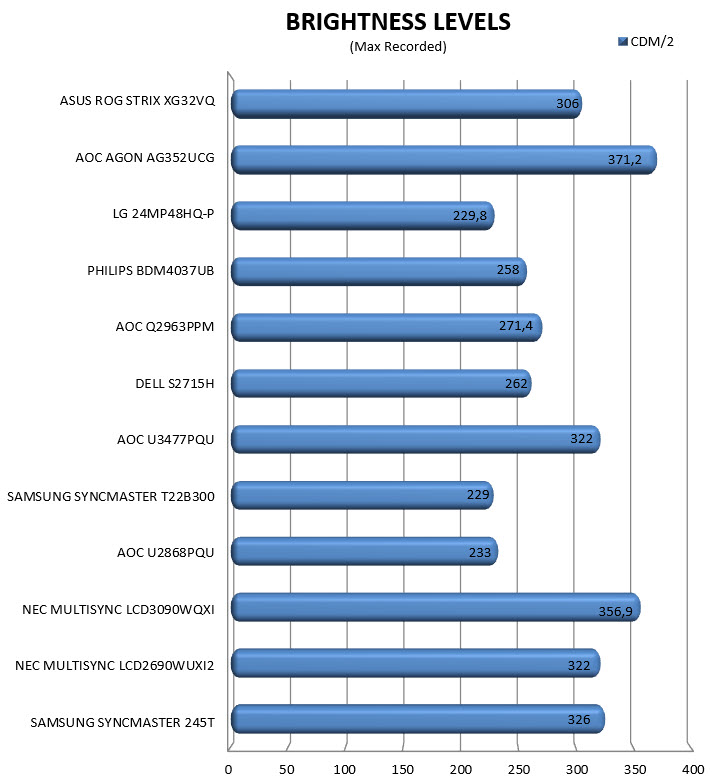 By using the Spyder5 Elite+ Colorimeter by Datacolor we can measure both the color gamut (SRGB and Adobe) and the brightness levels of the monitor at hand.
By using the Spyder5 Elite+ Colorimeter by Datacolor we can measure both the color gamut (SRGB and Adobe) and the brightness levels of the monitor at hand.
COLOR AND LUMINANCE UNIFORMITY

Here you can see our results for Color and Luminance Screen Uniformity (instead of just listing results at 100% brightness we are listing all of them - 50/67/83/100%).
POWER CONSUMPTION

Power consumption may not be what we look for when out to get a brand new monitor but at the end of the day it's still an important factor so we hope this is interesting to some of you.
MONITOR RATING

 Datacolor rates monitors based on their overall results so we decided to include this chart as well.
Datacolor rates monitors based on their overall results so we decided to include this chart as well.
CONCLUSION
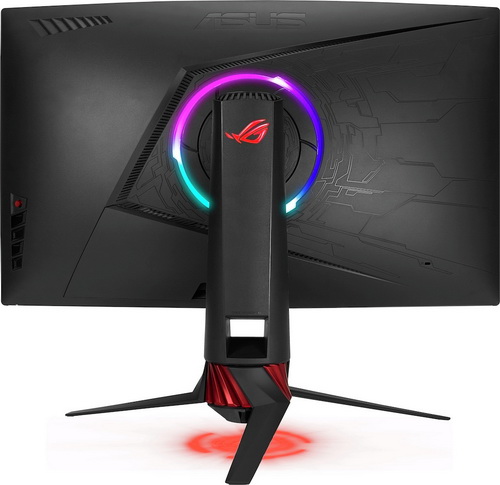
The ASUS ROG Strix XG32VQ Curved Gaming Monitor was released in late 2018 and so it’s far from the newest model of the bunch. Still although not perfect as you can all easily tell from our charts it still represents great value for consumers (especially gamers) looking for a high-performance 32-inch model not of the ultra-wide class. Build quality is near-excellent, Image quality is very good (yes not the best around but still very good), the FreeSync feature (144Hz) combined with the 4ms response time all but ensure smooth gaming and the WQHD resolution of 2560x1440 means you don’t need a monster card to pair this monitor with. On top of the above add the design, available inputs and all the available menu settings ASUS has given the XG32VQ (Aura Sync/RGB included) and the end result is a very good 1440p monitor. I was a bit surprised to see that ASUS has made it so hard for people to find the latest version of their DisplayWidget software (and v1.0.* doesn’t even work properly) but as I’ve said before they really need to step up their game in that regard (never had an issue with their GPU software however).
After just less than 2 years in the market the ROG Strix XG32VQ 32-inch Curved Gaming Monitor by ASUS retails for USD557.49 inside the USA (Amazon.com) and for 506.68Euros inside the EU (Amazon.de) a price tag which honestly is quite balanced (yet perhaps a tad higher than expected). The most important question however is whether or not you’d want a wide (16:9/16:10) or an ultra-wide (21:9) model and that’s far from easy to answer since both types have their pros and cons. Personally i still have a hard time accepting ultra-wide screens (mainly because I’ve used 16:9/16:10 models since 2005) but i can’t deny that they offer more horizontal screen space and (most) movies do look great. On the other hand, not all games truly support ultra-wide screens, higher resolutions found in 32+ inch models require stronger cards (sure you can always use a smaller resolution but the end result wouldn’t make much sense) and like i said some people may feel strange at first. Once again at the end of the day it all comes down to personal preference and needs but since the ROG Strix XG32VQ delivers on pretty much all it should it gets our Golden Award.

PROS
- Build Quality
- Design (Curved / RGB LEDs)
- 2560x1440p WQHD Resolution
- WLED Backlit SVA Panel (16:9 / 144Hz / 4ms GTG Response Time)
- Very Good Image Quality
- FreeSync / GamePlus / Aura Sync Features
- Stand (Height / Swivel / Tilt Adjustable)
- Available Ports (2xUSB 3.0 / HDMI v2.0 / DP v1.2 / MiniDP)
- 3 Year Limited Collect Warranty
CONS
- Price (For Some)
- Power Consumption (Class C)

 O-Sense
O-Sense





